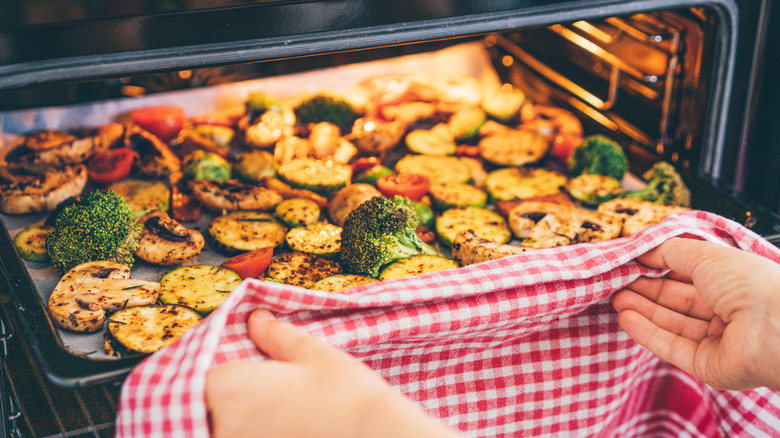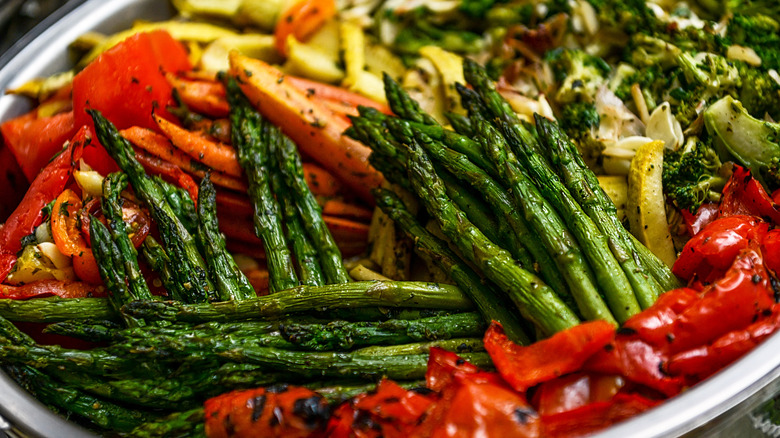Your Broiler Is The Hands-Off Way To Roast Vegetables To Charred Perfection
When it comes to veggies that are roasted to perfection, conventional wisdom suggests that a little time in the oven at about 400 degrees Fahrenheit ought to net you some pretty supreme roasted vegetables. But what if you could make them even better? What if you switched from "oven" to "broiler" mode and cranked things up a notch — literally — to around 500 degrees Fahrenheit? You might just experience veggies that are roasted to perfection, that's what.
Roasting them this way turns out veggies that are softer on the outside and relatively crisp on the inside. This makes for more interesting flavors and textures than you might get from veggies you roast in the more traditional way at lower temperatures. Additionally, your broiler makes pretty quick work of this task and chars the vegetables slightly, pulling out a smoky flavor to boot. All in all, you'll experience a kaleidoscope of flavor and texture that translates into an amazing eating experience.
If you're considering vegetables like bell peppers, cauliflower, and broccoli as well as cabbage or onions, you're on the right track. Other veggies like tomatoes, zucchini or yellow squash, brown or white mushrooms, and asparagus also make flavorful choices. These options will make the most perfect roasted veggies when using your broiler.
Prepping your vegetables for roasting
Whatever veggies you choose to roast using your broiler, you'll cut up into fairly sizable chunks. (Conversely, if you're in a hurry, you can chop your veggies into small pieces so they'll cook even faster.) In particular, vegetables like broccoli or cauliflower work better for roasting if you break them down a bit so that the florets are more bite-sized. As for cabbage or onions, don't try to peel them into thin layers. Instead, cut them into chunks. This ensures that you get big pieces of crisp-on-the-inside, charred-on-the-outside veggies. All of these will go on a baking sheet. Make sure you leave enough space between each piece to allow for proper cooking.
As for what to put on them before roasting, you can make your veggies as simple or complex as your taste buds like. In their simplest form, your roasted veggies will come to life with salt and about 1 teaspoon of olive oil per pound of veggies. Minimal amounts of seasonings encourages the vegetables' naturally complex flavors to come forth.
If you like a little more flavor, it's hard to beat seasonings and spices like garlic powder as well as rosemary, thyme, oregano, or basil. In the latter case, you'll get bursts of flavor if you sprinkle the herbs in fresh or place sprigs of them throughout the sheet pan. Dill works well for this, too. White pepper is also worth considering as a seasoning, because it adds a bit of a spicy nip without overpowering the veggies. However, it's really going to be a matter of personal preference. At the end of the day, your roasted vegetables just need to taste good to you.

